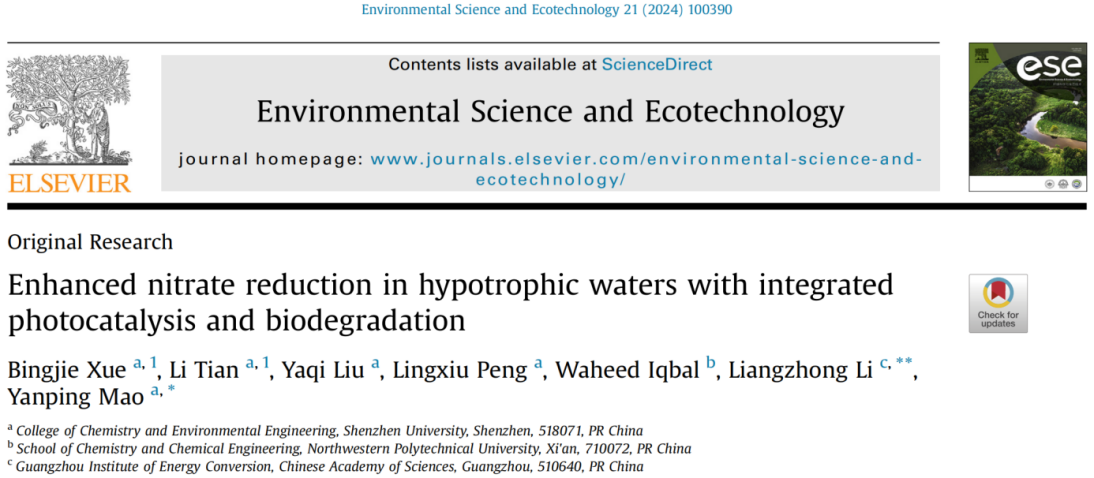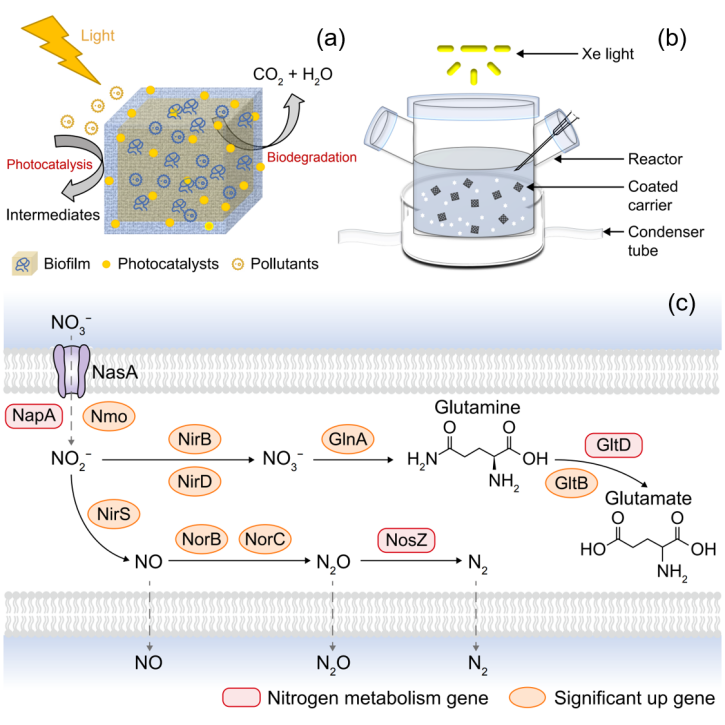Addressing nitrate contamination in water bodies is a critical environmental challenge. Intimately Coupling Photocatalysis and Biodegradation (ICPB) presents a promising solution. However, there is still debate about the effectiveness of ICPB in reducing nitrate under hypotrophic conditions. Further research is needed to understand its microbial metabolic mechanism and the functional changes in bacterial structure.

Recently, associate professor Yanping Mao’s group from the College of Chemistry and Environmental Engineering, Shenzhen University published the latest research “Enhanced nitrate reduction in hypotrophic waters with integrated photocatalysis and biodegradation” on Environmental Science and Ecotechnology (IF: 12.6, JCR Region 1, TOP Journal). This research not only elucidates the photocatalytic mechanism behind nitrate reduction in hypotrophic conditions but also provides genomic insights that pave the way for alternative approaches in water remediation technologies.

Figure 1. The mechanism diagram (a), reactor (b) and metabolic model of nitrate reduction (c) of ICPB
This work built ICPB with the best-performing photocatalyst through twelve synthesized TiO2/g-C3N4. The results show that compared with traditional biodegradation, ICPB can improve nitrate reduction efficiency by 17%, nitrogen conversion efficiency by 11%, and inhibit the accumulation of undesirable intermediate products such as nitrite. In addition, ICPB could use 12.2% less organic carbon to reduce 26.3% more nitrate than traditional biodegradation, even at low organic carbon conditions. With the increase of ICPB cycles, Acidovorax, Thauera, Hydrogenophaga and Rhodococcus gradually took the dominant position in the system, and these bacteria have been proven to play an important role in nitrogen cycling. Moreover, anaerobic metabolism gradually replaces aerobic metabolism in ICPB. The microbial community and metabolic pathways of the system evolved in the direction of nitrate reduction. These results indicate that microorganisms can capture the photons generated by photocatalysis to maintain their own metabolism and carry out nitrate reduction. This study provides the scientific basis and technical support for nitrate reduction in low-carbon conditions in ICPB.
Full text link:https://www.sciencedirect.com/science/article/pii/S2666498424000048
